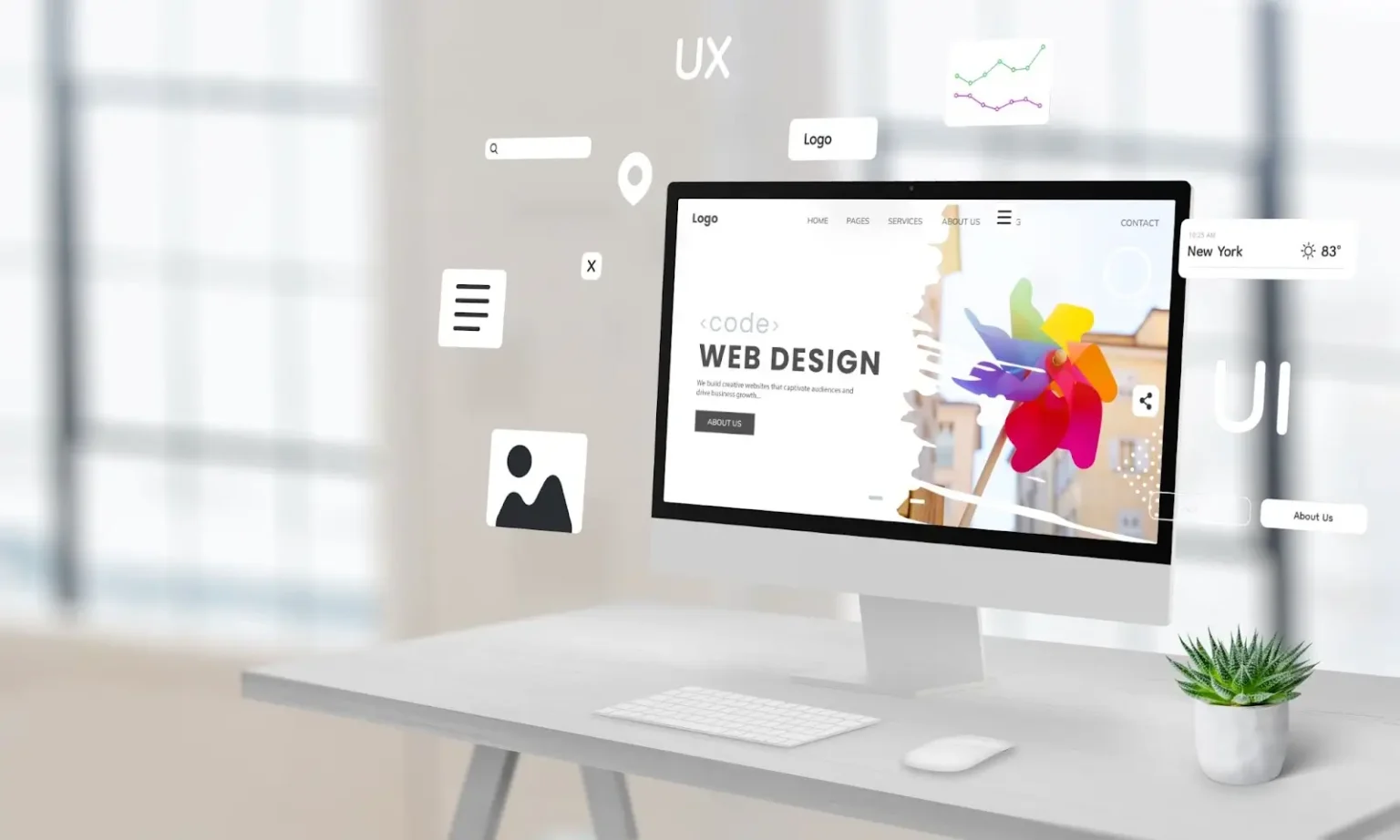The Importance of User Experience in Reliable Web Design Strategies
User experience (UX) functions as a cornerstone in efficient web design approaches. It forms how users engage with a website, influencing their fulfillment and chance of returning. A properly designed UX can enhance engagement through user-friendly navigation and receptive layouts. Forgeting these aspects might lead to stress and increased bounce rates. Comprehending the complexities of UX is crucial for designers intending to create engaging electronic experiences that resonate with diverse target markets. What aspects absolutely drive effective user engagement?
Comprehending User Experience and Its Effect On Style
User experience (UX) is usually perceived as a simple aspect of web layout, it basically shapes just how customers communicate with a website. UX includes all elements of the user's interaction, consisting of functionality, availability, and total complete satisfaction. A favorable UX cultivates interaction, urging users to explore the website and return in the future. On the other hand, an unfavorable experience can cause stress, leading to high bounce rates and lost opportunities for conversion.
Style aspects like navigation, layout, and material organization play vital duties in shaping this experience. Reliable UX design expects user demands and choices, ensuring that info is quickly obtainable and aesthetically attractive. Additionally, understanding user habits with analytics can give useful understandings, informing layout choices that enhance use. Ultimately, a thorough understanding of UX enables developers to produce websites that not only draw in users but likewise advertise purposeful interactions that line up with business objectives and user expectations.
Secret Concepts of Efficient User Experience
Effective user experience rests on a number of vital concepts that improve website capability and engagement. Intuitive navigating style, receptive design essentials, and the value of visual pecking order are important aspects that add to a seamless interaction between users and web material. Understanding these concepts allows developers to produce more easy to use and obtainable electronic atmospheres.
Instinctive Navigating Style
Instinctive navigating layout serves as an essential portal to their total experience when customers encounter an internet site. Reliable navigation allows customers to effortlessly find the details they look for, boosting their communication with the website. Trick concepts consist of clear labeling, rational company, and constant positioning of navigation components. Tags ought to be simple, enabling individuals to predict the material they will certainly locate. A well-structured hierarchy aids customers understand the connection between various areas, leading them with the website perfectly. Furthermore, responsive menus and easily accessible links add to a fluid experience across tools. By focusing on instinctive navigating, designers can considerably lower user frustration and rise interaction, eventually promoting a positive understanding of the site and its material.
Responsive Layout Basics
A well-structured navigating system normally causes the need for a receptive layout, which is vital in today's diverse digital landscape. A responsive format warranties that websites feature effortlessly across various gadgets, consisting of smartphones, tablet computers, and desktop computers. This adaptability improves user experience by allowing material to be easily available and visually coherent, despite screen size. Secret principles of responsive design include liquid grids, adaptable images, and media questions, which facilitate perfect watching. Furthermore, prioritizing touch-friendly aspects enhances interaction on smart phones. By carrying out a receptive design, developers can fit users' requirements, lessen bounce rates, and boost involvement. Ultimately, a well-executed responsive layout fosters a favorable user experience, encouraging site visitors to explore the web site even more.
Visual Power Structure Significance
Visual hierarchy plays a vital duty in directing customers through a site, guaranteeing that essential info catches their interest initially. By tactically using size, comparison, shade, and spacing, developers can produce a clear path for individuals to adhere to. Larger components commonly attract the eye, suggesting their importance, while contrasting colors can highlight contact us to activity. Additionally, constant placement and group of associated web content boost understanding, making navigation instinctive. Efficient use of visual hierarchy not just enhances usability yet also sustains the general visual of the site, fostering a favorable user experience. When customers can easily determine one of the most essential information, they are more most likely to engage with the material, resulting in boosted contentment and interaction with the web site.
The Duty of Use in Web Design
Use plays a crucial function in web design, specifically via navigating simplicity and adherence to ease of access requirements. Reliable navigating boosts user satisfaction by enabling visitors to find info promptly and with ease. On the other hand, meeting access requirements ensures that all users, regardless of their abilities, can properly interact with the internet site.
Navigating Simplicity
Simpleness in navigation stands as a keystone of reliable web design, substantially influencing user experience. A structured navigation system permits customers to find details quickly and without effort, lowering frustration and boosting satisfaction. Clear labeling and sensible framework are important components, guiding customers easily via the site. Redundant web links or excessively intricate menus can disorient individuals, leading to increased bounce rates. Furthermore, mobile responsiveness needs to be taken into consideration, guaranteeing navigation remains uncomplicated across gadgets. Prioritizing vital web pages and reducing mess better supports user interaction. Reliable navigation not only promotes a favorable experience but likewise motivates users to discover the site better, eventually resulting in greater conversion prices. In this respect, navigating simpleness acts as a critical element in right here the overall efficiency of web design techniques.
Accessibility Criteria
User engagement is substantially enhanced when websites follow availability criteria, guaranteeing that all customers, despite their abilities, can browse and connect effectively. Compliance with these standards not only widens the audience however likewise enhances general user complete satisfaction. Easily accessible style integrates features such as text choices for pictures, key-board navigating, and enough color contrast, which facilitate use by people with handicaps. In enhancement, implementing these requirements can favorably influence search engine optimization (SEO) by improving website framework and clarity. As web design evolves, focusing on ease of access becomes Get More Information important in cultivating an inclusive electronic environment. By accepting these criteria, designers contribute to an extra fair internet, ultimately driving user loyalty and engagement.
Significance of Responsive Style for User Involvement
As customers progressively accessibility websites through a variety of gadgets, the importance of receptive layout comes to be extremely important for involving users successfully. Responsive design guarantees that a site adapts perfectly to various screen sizes, offering a suitable watching experience despite the gadget utilized. This flexibility boosts user interaction by helping with simpler navigation and communication with web content.
When individuals run into a site that is responsive, they are most likely to stay much longer, explore better, and return in the future. A well-designed responsive format reduces the aggravation usually connected with scrolling and zooming on smaller sized screens, therefore lowering bounce prices. In addition, responsive design can positively affect internet search engine positions, as search engines prioritize mobile-friendly internet sites. In today's electronic landscape, where mobile usage continues to climb, applying receptive style is not just beneficial, yet important for keeping user involvement and ensuring a favorable experience throughout all tools.
Enhancing Load Times for Better User Contentment

To improve load times, internet designers must focus on enhancing images, leveraging internet browser caching, and lessening HTTP demands. Additionally, utilizing Content Shipment Networks (CDNs) can accelerate content shipment by distributing it throughout numerous geographic areas. Enhancing code, such as compressing CSS and JavaScript files, further adds to quicker packing speeds.
Eventually, a commitment to enhancing load times not just improves user satisfaction yet also enhances brand name commitment and boosts the likelihood of repeat brows through. A swift, seamless experience is important for retaining users and cultivating positive communications.
The Influence of Visual Pecking Order on User Interaction
Visual pecking order serves as an essential element in assisting user interaction on an internet site. By organizing content in such a way that focuses on details aesthetically, developers can influence exactly how individuals browse and involve with a website. This pecking order is developed with numerous layout techniques, consisting of size, color, spacing, and comparison. For circumstances, bigger font styles or strong shades accentuate vital elements, such as phone calls to action or headings, while restrained colors and smaller typefaces can suggest subordinate information.
Effective visual power structure assists customers rapidly identify what is crucial, decreasing cognitive tons and boosting usability. It permits instinctive navigating, making it easier for customers to find what they need without aggravation. As individuals connect with an internet site, a well-structured aesthetic power structure promotes an extra satisfying experience, eventually resulting in greater involvement and conversion rates. Developers should focus on these principles to produce an user-centered and efficient internet environment.
Determining User Experience: Devices and Methods

Frequently Asked Inquiries
Exactly How Can I Improve My Site's User Experience on a Spending plan?
To boost an internet site's user experience on a budget, one can enhance web page load rate, streamline navigation, implement responsive style, improve content clarity, and gather user comments for constant refinements, guaranteeing a rewarding site visitor experience.
What Prevail User Experience Mistakes to Prevent in Web Design?
Typical user experience mistakes in web design include chaotic designs, bad navigation, sluggish loading times, lack of mobile responsiveness, neglecting accessibility, inconsistent branding, and stopping working to prioritize user comments - agency for web design. Each can substantially impede overall site efficiency
Just how Frequently Should I Update My Web Site for Better User Experience?
Sites must be upgraded frequently, ideally every couple of months, to maintain excellent user experience. Frequent updates assist address use concerns, freshen material, and adapt to transforming user needs, guaranteeing the site continues to be appropriate and interesting.

Can User Experience Impact Search Engine Optimization Rankings on My Site?
User experience can considerably affect SEO positions, as online search engine prioritize websites that offer seamless navigation, fast loading times, and appealing web content. A favorable user experience can cause lower bounce prices and greater search presence.
What Function Does Ease Of Access Play in User Experience Design?
Accessibility plays a vital function in user experience style by making sure that all people, no matter abilities, can engage and browse with a site efficiently. This inclusivity enhances overall satisfaction and interaction amongst varied customers.
User experience (UX) is frequently viewed as a simple element of internet layout, it fundamentally forms how users communicate with a web site. User involvement is substantially boosted when sites stick to availability criteria, making certain that all customers, no matter of their capacities, can browse and engage successfully. Determining user experience (UX) is vital for recognizing just how effectively a website fulfills the demands of its customers. Furthermore, use testing, where genuine customers navigate the website while viewers note difficulties, provides straight responses on user experience. Usual user experience errors in internet design consist of messy formats, bad navigation, slow filling times, absence of mobile responsiveness, ignoring ease of access, inconsistent branding, and falling short to prioritize user comments.